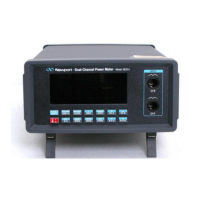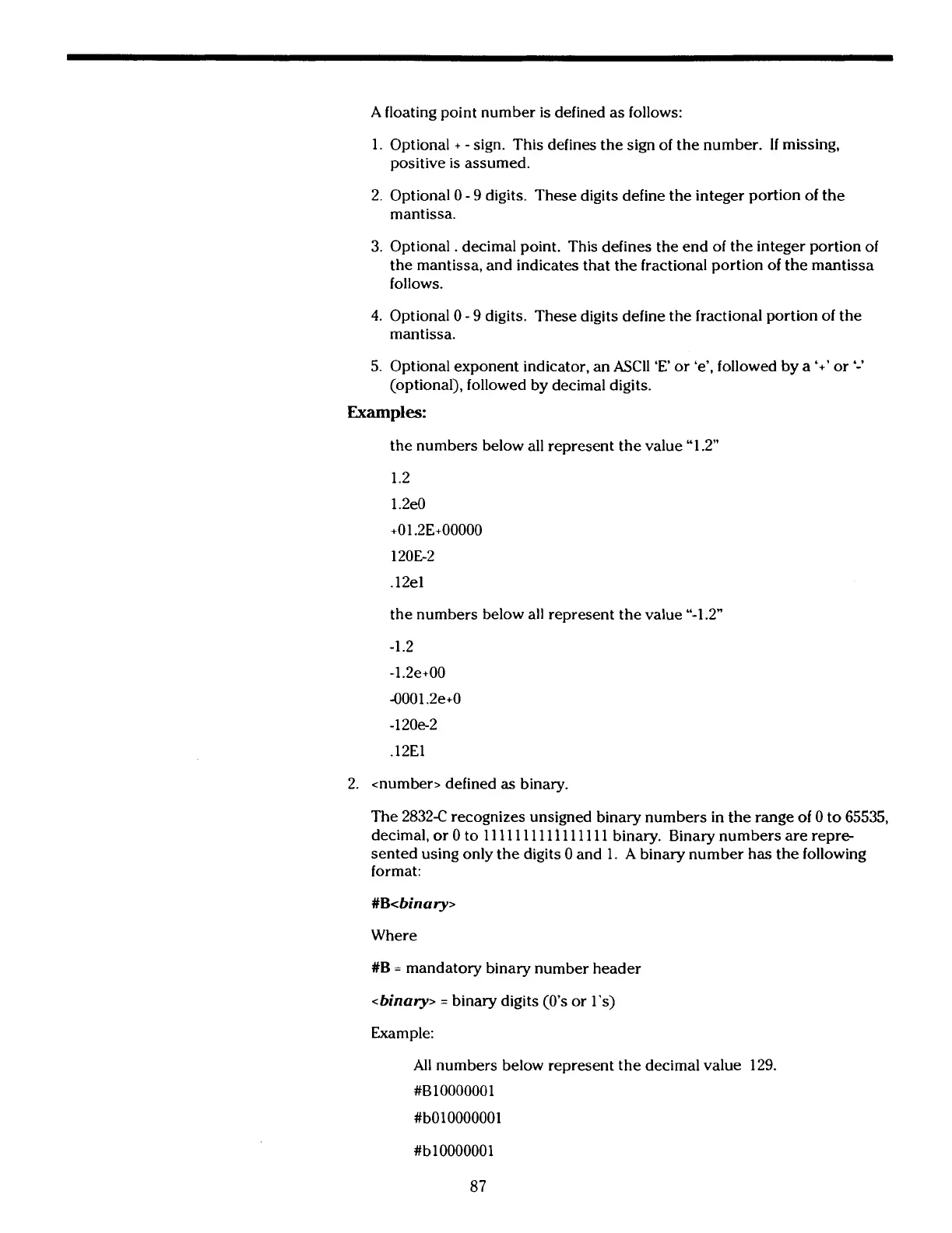A floating point number
is
defined as follows:
1. Optional
+
-sign. This defines the sign of the number.
If
missing,
positive
is
assumed.
2. Optional 0
-
9 digits. These digits define the integer portion of the
mantissa.
3. Optional. decimal point. This defines the end of the integer portion of
the mantissa, and indicates that the fractional portion of the mantissa
follows.
4.
Optional 0
-
9 digits. These digits define the fractional portion of the
mantissa.
5. Optional exponent indicator, an ASCII
'E'
or 'e', followed by
a
'+'
or
'-'
(optional), followed by decimal digits.
Examples:
the numbers below all represent the value "1.2"
the numbers below all represent the value "-1.2"
2. <number> defined
as
binary.
The 2832-C recognizes unsigned binary numbers in the range
of
0 to 65535,
decimal, or 0 to 11 11 1 11 11 11 11 11 1 binary. Binary numbers are repre-
sented using only the digits 0 and 1. A binary number has the following
format:
Where
#B
=
mandatory binary number header
<binary>
=
binary digits (0's or 1's)
Example:
All numbers below represent the decimal value 129.
#B
1000000 1
#b010000001
Artisan Technology Group - Quality Instrumentation ... Guaranteed | (888) 88-SOURCE | www.artisantg.com

